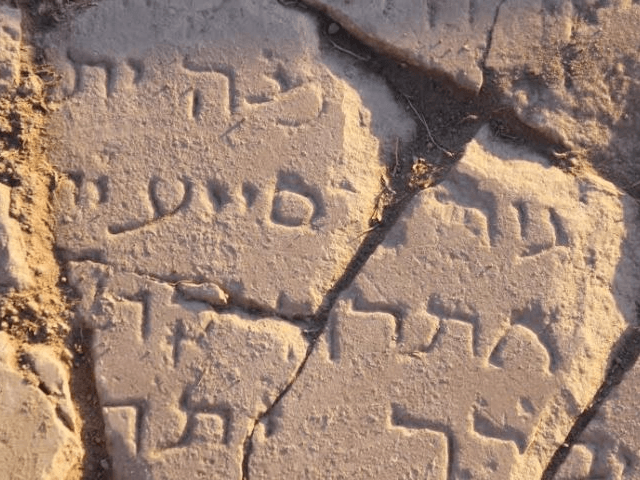Where Christ Drove
Demons into Sea: Archaeological Evidence Uncovered
by
Thomas D. Williams, Ph.D. 17 Dec 2015
Evidence has
been uncovered corroborating the site of one of Jesus’ most powerful and
dramatic miracles: the casting out of demons into a herd of swine in the land
of the Gadarenes (or Gerasenes).
Israeli
archaeologists have unearthed a 1,500-year-old marble slab with Hebrew
inscriptions near Kursi, the spot traditionally associated with the miracle of
Christ’s banishment of demons into a herd of swine.
Archeologists
believe the slab to be a commemoration tablet dating from around 500 AD. The
inscription in Hebrew begins with the words “Remembered for good.”
The
biblical description of the miracle is one of the most evocative in the entire
Gospel. Recounted by Matthew, Mark, and Luke with different nuances, the Gospels
depict Jesus in one of His most direct confrontations with Satan.
Mark
describes
the possessed man as fiercely strong and dangerous. Local citizens had tried in
vain to restrain him with shackles and chains, but he broke them to pieces. The
man lived among the tombs, howling night and day and gashing himself with
stones. He terrified the people so much that no one dared go near.
On
seeing Jesus approach, the man ran and bowed down before him, while the demons
inside him howled and begged Jesus not to torment them.
Jesus,
meanwhile, was ordering them, “Come out of the man, you unclean spirit!”
When
Jesus commanded the demons to identify themselves, they replied, “My name is
Legion; for we are many.”
Jesus
then cast the demons into a herd of about 2,000 swine grazing on a nearby
hillside. The pigs rushed headlong down the steep bank into the sea, where they
drowned, to the utter amazement and shock of the townspeople.
The
healed demoniac, now clothed and in his full senses, begged Jesus to take him
back with him, but Jesus told him to stay and proclaim the mercy of God to
his family and friends.
The
University of Haifa researchers found the marble on the eastern shores of the
Sea of Galilee, in Kursi, the historically Gentile district of the Decapolis.
On
the slab, scientists also identified the words “amen” and “marmaria,” which
could refer to marble or to Mary, Jesus’ mother.
Kursi
has been identified in Christian tradition with Gadarenes,
where the Miracle of the Swine took place. In the fifth and sixth centuries, a
Christian church was built to mark the spot of the biblical location but was
destroyed by invading Persians in 614 AD and, after being rebuilt, was
demolished by fire shortly afterward. The site remained abandoned for most of
the following 1,300 years.
The
church was lost to history until it was uncovered
by accident during the building of a new road in 1970. Archaeological
excavations continued at the site from 1970-74. Around the vicinity of the
church, caves are still visible, and there is a mountain that drops down into
the sea, such as described in the biblical account.
Christ’s
trip to the land of the Gadarenes (Kursi) was one of his rare visits to Gentile
territory, which also explains the presence of the herd of pigs, which
was forbidden to the Jews. Jesus Himself
had said that He was sent only “to the lost sheep of the house of Israel.”
Celebrated
Christian apologist Steve Ray, a frequent visitor to Kursi who often leads
groups through biblical sites in the Holy Land, told Breitbart News that since
Kursi had the largest monastery in Israel, it was obviously held in high esteem
by the first Christians.
“The
early Judeo-Christians remembered the places and events surrounding the life of
Christ, and as soon as Christianity was legalized, churches were built on these
different sites,” he said.
“The
more archaeology uncovers,” Ray said, “the more the Bible is confirmed.”





No comments:
Post a Comment